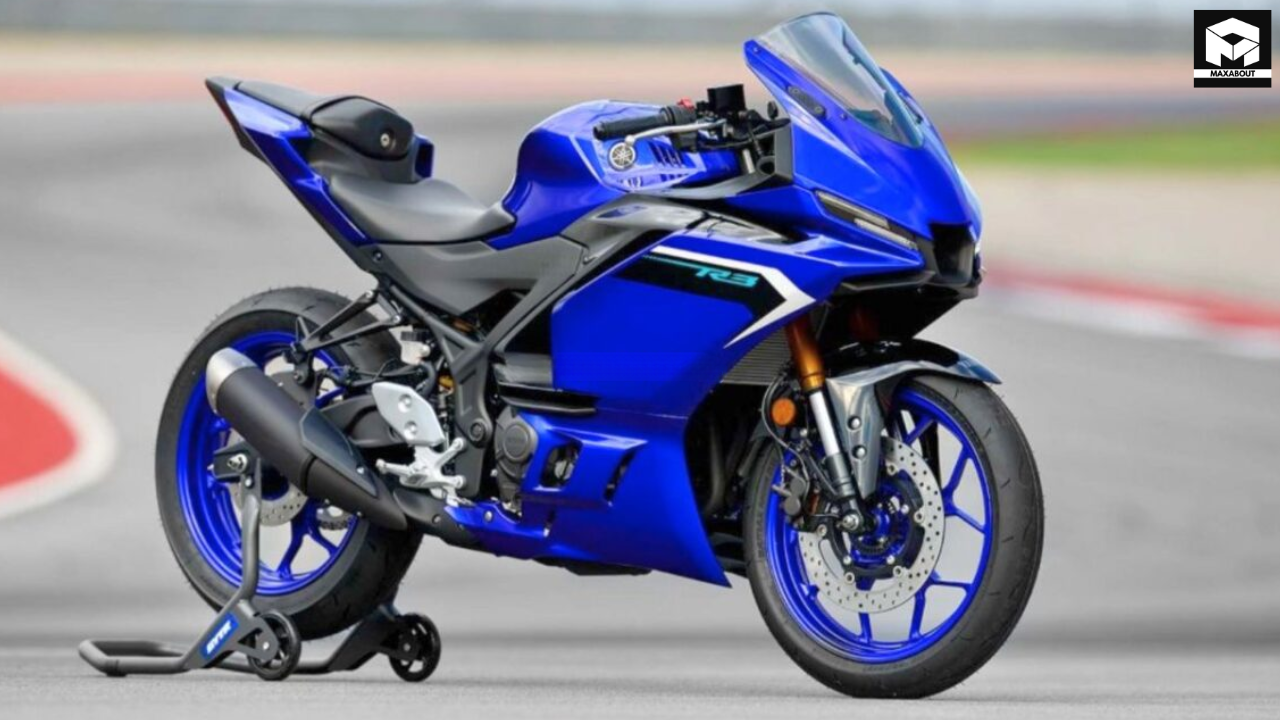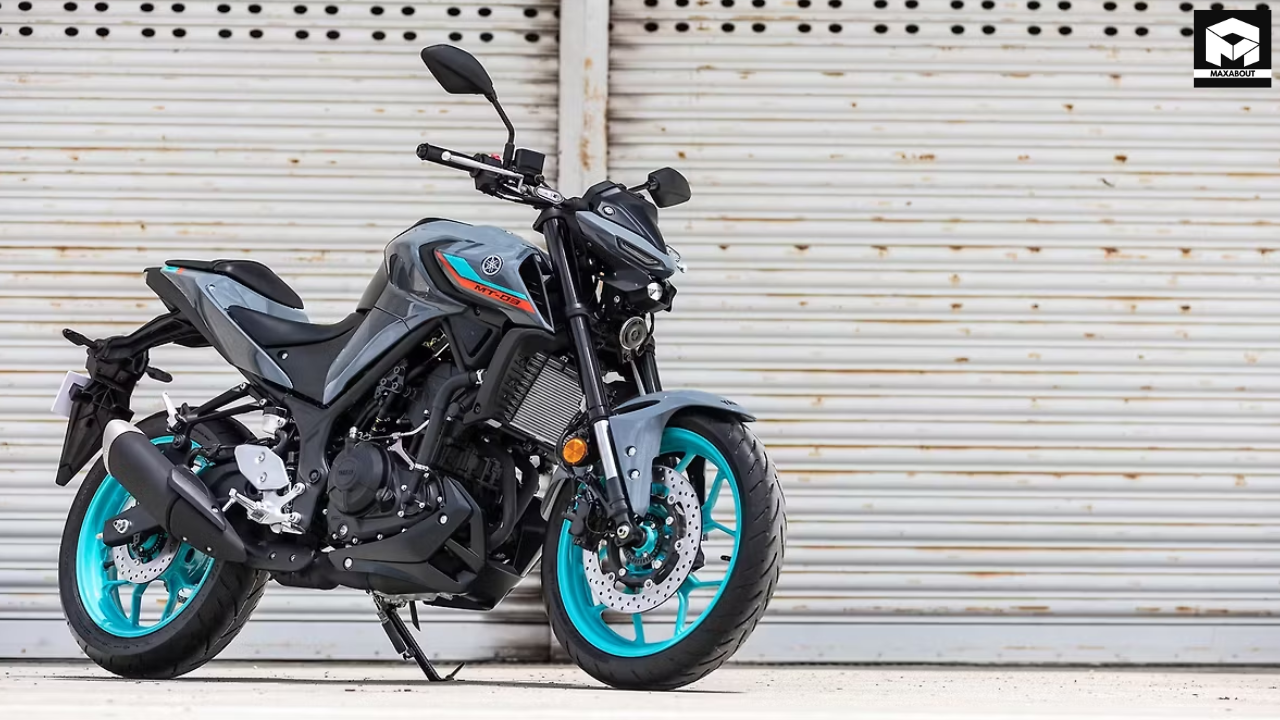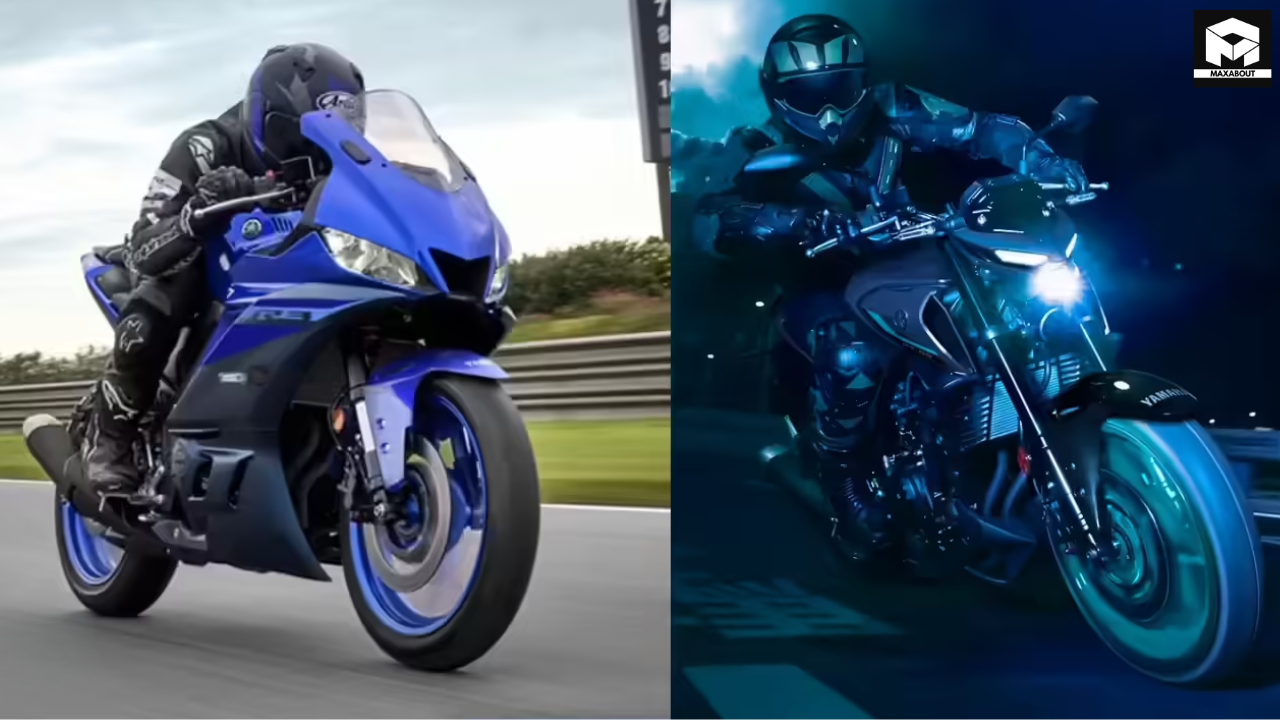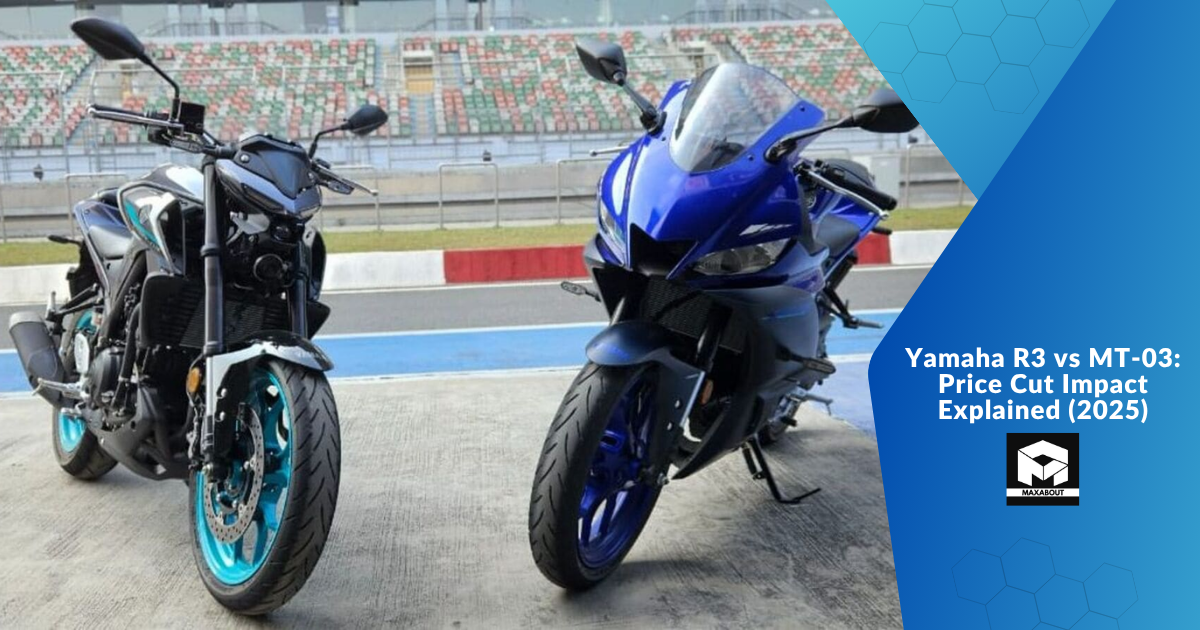Introduction
The premium motorcycle market in India just got more interesting. Yamaha Motor India has announced a significant price reduction of Rs. 20,000 on two of its popular performance models - the fully-faired YZF-R3 and the naked street fighter MT-03. As someone who closely follows pricing strategies in the motorcycle industry, I can tell you this is a substantial adjustment that's likely to create waves in the competitive 300-400cc segment.
The timing of this price cut is particularly noteworthy, coming at a point when the premium motorcycle segment in India is seeing intense competition from multiple manufacturers. Let's dive into what this price reduction means, the new pricing structure, and how this might impact both Yamaha's market position and consumer choices in this segment.
New Pricing Structure for Yamaha R3 and MT-03
Following the price reduction, here's how the new pricing for these models stacks up:
| Model | Original Ex-showroom Price | New Ex-showroom Price | Price Reduction |
|---|---|---|---|
| Yamaha YZF-R3 | Rs. 4,64,900 | Rs. 4,44,900 | Rs. 20,000 |
| Yamaha MT-03 | Rs. 4,59,900 | Rs. 4,39,900 | Rs. 20,000 |
This reduction brings both motorcycles to a more competitive price point, especially considering the feature set and performance they offer. While still positioned as premium offerings, they now present a more attractive value proposition to potential buyers who might have been on the fence due to pricing concerns.
What Drove Yamaha's Price Reduction Decision?
Market Competition Analysis
The 300-400cc segment has become increasingly crowded in recent years. Looking at the market data, Yamaha faces stiff competition from motorcycles like the KTM 390 Duke, BMW G 310 R, TVS Apache RR 310, and Kawasaki Ninja 300. From what industry reports suggest, the R3 and MT-03 were positioned at a price point that made them less competitive despite their excellent engineering and brand value.
According to dealer feedback that's been reported across motorcycle forums, the initial pricing strategy may have limited Yamaha's ability to capture market share in this crucial segment. This price adjustment appears to be a strategic response to that market reality.
Production and Import Strategy Changes
Both the R3 and MT-03 are brought into India as Completely Built Units (CBUs), which typically results in higher pricing due to import duties. Industry analysts have suggested that Yamaha might have optimized their supply chain or import processes, allowing them to pass on cost benefits to consumers.
There's also speculation in automotive circles that this price reduction could be a precursor to local assembly plans, though Yamaha hasn't made any official announcements regarding manufacturing strategy changes.
Technical Specifications and Value Proposition
To understand why this price cut matters, it's worth examining what these motorcycles offer:
Yamaha R3 - The Sporty Option

The Yamaha R3 is powered by a 321cc parallel-twin engine that produces approximately 42 PS of power and 29.5 Nm of torque, paired with a 6-speed transmission. It features:
- Dual-channel ABS
- KYB inverted front forks
- Lightweight chassis with excellent handling characteristics
- Full fairing with R-series inspired styling
- LED headlights and tail lights
- LCD instrument cluster
With the Rs. 20,000 reduction, the R3's value proposition improves significantly against competitors like the TVS Apache RR 310 and Kawasaki Ninja 300.
Yamaha MT-03 - The Street Fighter

The MT-03 shares the same 321cc parallel-twin engine as the R3, but presents it in a naked street fighter package with:
- Aggressive MT-series styling
- Upright riding position for better urban comfort
- LED projector headlight with characteristic MT "angry eyes" design
- Same premium suspension and braking setup as the R3
- Lighter weight due to the absence of fairings
At its new price point, the MT-03 presents a compelling alternative to bikes like the KTM 390 Duke and BMW G 310 R.
Market Impact and Consumer Benefits
Comparison with Key Competitors
Here's how the new pricing positions these Yamaha models against key competitors:
| Model | Ex-showroom Price (Approximate) | Engine | Power Output |
|---|---|---|---|
| Yamaha R3 | Rs. 4,44,900 | 321cc Parallel-Twin | 42 PS |
| Yamaha MT-03 | Rs. 4,39,900 | 321cc Parallel-Twin | 42 PS |
| KTM 390 Duke | Rs. 3,11,900 | 373cc Single-Cylinder | 43 PS |
| TVS Apache RR 310 | Rs. 2,65,000 | 312.2cc Single-Cylinder | 34 PS |
| Kawasaki Ninja 300 | Rs. 3,40,000 | 296cc Parallel-Twin | 39 PS |
While the Yamaha models still command a premium, the price reduction narrows the gap significantly, making them more viable options for buyers who value the refined character of parallel-twin engines and Yamaha's build quality.
Buyer Perspectives
For prospective buyers, this price reduction comes as welcome news. According to consumer sentiment analysis from motorcycle forums, many enthusiasts considered the R3 and MT-03 desirable but overpriced for the Indian market. The Rs. 20,000 reduction addresses this concern directly.
From the feedback visible on social media and motorcycle communities, this price adjustment could be the tipping point for many who were previously considering alternatives but preferred Yamaha's engineering and brand value.
Future Implications for Yamaha India

This price reduction could signify a shift in Yamaha India's strategy. Industry analysis suggests several possible implications:
- Yamaha might be testing market response before potentially introducing local assembly to further reduce prices
- The brand could be preparing for updated models or new launches in this segment
- This could be part of a broader strategy to strengthen Yamaha's premium segment presence in India
- The company might be responding to dealer feedback about sales challenges at the previous price points
The price reduction also aligns with Yamaha's global strategy of strengthening its position in the mid-capacity segment, which offers better margins than the commuter segment while being more accessible than the litre-class superbikes.
Frequently Asked Questions
Is this price reduction permanent or a limited-time offer?
Based on the information available from Yamaha India, this appears to be a permanent price revision rather than a temporary promotional offer.
Are there any changes to the motorcycles along with the price reduction?
No technical or feature changes have been announced along with the price reduction. The specifications and features remain identical to the previously priced models.
Does this price cut apply to all color variants?
Yes, according to dealer reports, the price reduction applies uniformly across all available color options for both models.
How does this affect the resale value of existing R3 and MT-03 owners?
While there might be a short-term impact on resale values, the increased popularity and sales volume resulting from the price cut could actually stabilize the used motorcycle market for these models in the long run.
Conclusion
Yamaha's decision to reduce the prices of the R3 and MT-03 by Rs. 20,000 represents a significant shift in their approach to the Indian premium motorcycle segment. This adjustment brings these well-engineered machines within reach of more enthusiasts and strengthens Yamaha's competitive position against rivals like KTM, TVS, and Kawasaki.
For consumers, this is undoubtedly positive news, offering better value for money on motorcycles that are known for their refinement, quality, and performance. The timing suggests Yamaha is serious about capturing a larger share of the growing premium motorcycle market in India.
As the market adapts to this new pricing structure, it will be interesting to see how competitors respond and whether this leads to broader price adjustments across the 300-400cc segment. One thing is clear - motorcycle enthusiasts now have even more reason to consider these Yamaha twins for their next purchase.

